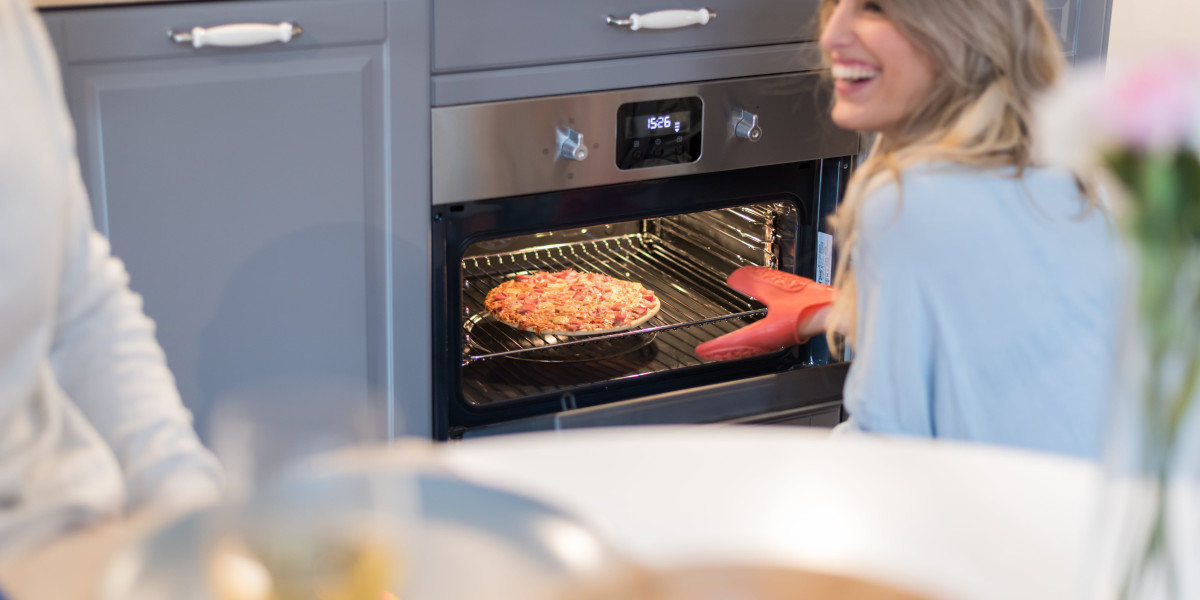Conquering Common Issues: A Comprehensive Guide to Bi-Fold Door Repair
Bi-fold doors, also called folding doors or concertina doors, use a stylish and space-saving solution for dividing spaces or connecting indoor and outside spaces. Their ability to fold nicely away when open maximizes area and creates a smooth shift. Nevertheless, like any mechanical system, bi-fold doors can experience wear and tear in time, leading to various functional issues. Understanding how to identify and attend to these typical issues is crucial for keeping the performance and longevity of your bi-fold doors.
This post functions as a thorough guide to bi-fold door repair, using step-by-step directions and informative advice for tackling normal concerns. Whether you're handling sticking doors, misalignment, or hardware breakdowns, this guide will equip you with the understanding and self-confidence to restore smooth operation to your bi-fold doors.

Common Culprits of Bi-Fold Door Problems
Before diving into repairs, it's vital to comprehend the typical issues that afflict bi-fold doors. Recognizing the origin is the primary step towards reliable resolution. Here are a few of the most regular problems house owners encounter:
- Sticking or Binding Doors: This is maybe the most typical problem. Doors that stick or bind throughout opening and closing can be discouraging and show a number of underlying problems. Often, this is because of friction between door panels or in between the doors and the track system.
- Doors Not Closing Properly or Latching: If your bi-fold doors stop working to close flush or lock safely, it jeopardizes security and insulation. This issue frequently originates from misalignment, latch mechanism problems, or blockages in the track.
- Harmed or Worn Rollers and Tracks: Bi-fold doors depend on rollers sliding smoothly along tracks to operate. Gradually, these components can use down, become obstructed with debris, or even break. This results in jerky movement, sticking, and increased effort needed to run the doors.
- Loose or Damaged Hinges and Pivots: The hinges and pivots are the pivot points that enable the doors to fold and move. Loose screws, used hinges, or damaged pivots can cause doors to droop, become misaligned, and operate inadequately.
- Misalignment of Door Panels: Over time, the panels of a bi-fold door can end up being misaligned relative to each other and the frame. This misalignment can trigger rubbing, binding, and difficulty in closing and latching.
- Loose or Missing Hardware: Screws, brackets, and other hardware can loosen up gradually due to vibrations and regular use. This can result in instability, rattling, and eventually, practical problems.
Tools and Materials for Bi-Fold Door Repair
Having the right tools and materials on hand will make the repair process smoother and more efficient. While specific needs may differ depending on the concern, a basic toolkit for bi-fold door repair need to consist of:
- Screwdrivers: Both Phillips head and flathead screwdrivers in numerous sizes.
- Allen Wrenches (Hex Keys): Often utilized for changing rollers and hinges. A set of numerous sizes is suggested.
- Pliers: For grasping and manipulating small parts.
- Hammer: For mild tapping and changes.
- Measuring tape: For accurate measurements when adjusting or replacing parts.
- Level: To guarantee doors are plumb and level during changes.
- Lube: Silicone-based lube is perfect for tracks and rollers as it doesn't draw in dust. Avoid oil-based lubes that can end up being gummy gradually.
- Cleaning up Supplies: Brush, vacuum cleaner with crevice tool, and a moist cloth for cleaning up tracks and rollers.
- Replacement Parts: Depending on the medical diagnosis, you may require replacement rollers, hinges, pivots, screws, or even track areas. Determining the specific type of hardware utilized in your doors is crucial when sourcing replacements. Consider taking an old part to a hardware shop for matching functions.
- Wood Shims (Optional): For minor alignment modifications.
- Shatterproof glass: To protect your eyes throughout repair work.
- Work Gloves: To safeguard your hands.
Step-by-Step Guide to Common Bi-Fold Door Repairs
Now that you understand typical issues and have the required tools, let's check out how to attend to particular issues.
( 1) Addressing Sticking or Binding Doors:

- Step 1: Cleaning and Lubrication: Begin by thoroughly cleaning the tracks, both upper and lower, with a brush and vacuum to eliminate dust, particles, and animal hair. After cleaning, use a silicone-based lubricant along the tracks and to the rollers. Run the doors numerous times to disperse the lube. This simple action often solves minor sticking problems.
- Action 2: Roller Adjustment: If lubrication doesn't totally resolve the problem, analyze the rollers. Lots of bi-fold door rollers are adjustable utilizing screws or Allen wrenches. Find the modification mechanism on the rollers (usually on the leading or bottom of the door panel, near the roller). Thoroughly adjust the rollers to ensure they are all in contact with the track and moving smoothly. Prevent over-tightening, which can cause binding.
- Step 3: Hinge and Pivot Inspection: Check the hinges and pivots for looseness or damage. Tighten any loose screws. If hinges or pivots are noticeably damaged, they will require to be replaced. Keep in mind the type of hinge and pivot before purchasing replacements.
( 2) Repairing Doors That Don't Close or Latch Properly:
- Step 1: Latch and Striker Plate Alignment: Examine the lock and striker plate (the metal plate on the frame that the lock engages with). Make sure the lock is properly lined up with the striker plate. If they are misaligned, you might need to change the striker plate. Loosen up the screws holding the striker plate, reposition it slightly up until the lock engages efficiently, and after that retighten the screws.
- Step 2: Door Panel Alignment: Misaligned door panels can avoid proper closure. Visually examine the doors when closed. Are any panels rubbing versus each other or the frame? Small misalignment can sometimes be fixed by changing the hinges or pivots. For more significant misalignment, you might need to consider shimming behind hinges or adjusting track positions (for more intricate cases, expert assistance may be required).
- Action 3: Obstruction Check: Carefully check along the whole track and bifold door realignment pathway for any blockages that may be avoiding correct closure. This might be debris, loose items, or even distorted flooring near the door opening.
( 3) Replacing Damaged Rollers and Tracks:
- Step 1: Roller Replacement: Identify the type of rollers used in your doors. Get rid of the old roller by loosening or unclipping it from the door panel. Install the brand-new roller, ensuring it is safely fastened and properly aligned. Repeat for all harmed rollers.
- Action 2: Track Replacement (More Complex): Replacing tracks is a more involved process. It often needs getting rid of the door frame trim and potentially handling structural elements. If you are comfortable with more sophisticated DIY jobs, you can attempt track replacement. Nevertheless, if you are uncertain, it is advised to consult an expert. To replace a track:
- Carefully eliminate the trim surrounding the broken bifold door frame.
- Unscrew and eliminate the old track areas.
- Install the new track areas, ensuring they are level and aligned properly.
- Re-install the trim.
( 4) Tightening Loose Hardware and Replacing Damaged Hinges/Pivots:
- Step 1: Tightening Loose Hardware: Systematically examine all screws and bolts on the hinges, rotates, rollers, and tracks. Tighten up any loose hardware. If screws are stripped and not tightening, think about utilizing a little longer or thicker screws, or utilizing wood filler to offer much better grip for the screws (particularly for wood frames).
- Step 2: Replacing Hinges and Pivots: To replace a damaged hinge or pivot:
- Support the door panel to avoid it from drooping or falling when the hinge/pivot is removed.
- Unscrew and remove the old hinge or pivot.
- Install the new hinge or RepairMyWindowsAndDoors pivot in the same place, ensuring it is correctly lined up.
- Firmly fasten the brand-new hinge or pivot with screws.
- Repeat for all damaged hinges or pivots.
Preventative Maintenance for Bi-Fold Doors
Regular maintenance is key to avoiding lots of common bi-fold bifold door repair cost problems and extending their life-span. Adopt these preventative steps:
- Regular Cleaning: Clean tracks and rollers at least every couple of months, or more regularly in dusty environments.
- Lubrication: Lubricate tracks and rollers with silicone lube every 6 months to make sure smooth operation.
- Hardware Checks: Periodically inspect and tighten any loose screws or hardware.
- Gentle Operation: Avoid requiring the doors open or closed. Operate them smoothly and intentionally to decrease tension on the parts.
- Annual Inspection: At least when a year, carry out an extensive examination of all elements, including hinges, pivots, rollers, tracks, and lock mechanisms. Deal with any small problems before they intensify.
When to Call a Professional
While lots of bi-fold door repairs are manageable for DIY lovers, some situations necessitate expert intervention. Think about calling a handyman or bifold door knob repair professional if:
- You are uneasy with DIY repairs. Security and correct performance are critical.
- The problem is intricate or the cause is unclear. Expert diagnosis can conserve time and prevent additional damage.
- You are handling structural issues. If the door frame or surrounding wall structure is damaged, expert expertise is essential.
- You require to replace entire tracks or door panels. These tasks can be more intricate and need specific tools and knowledge.
- You lack the essential tools or time.
Conclusion
Bi-fold doors are a valuable addition to any home, providing versatility and style. By understanding common issues and carrying out basic repair and maintenance methods, you can keep your bi-fold doors running efficiently and effectively for years to come. This guide supplies a strong structure for dealing with typical repairs. Remember to prioritize security, work methodically, and don't think twice to seek expert assistance when required. With a little effort and knowledge, you can guarantee your bi-fold doors continue to improve your home.
Often Asked Questions (FAQs) about Bi-Fold Door Repair
Q1: Why are my bi-fold doors so hard to open and close?A: The most typical factors are unclean or dry tracks and rollers. Start by cleaning and lubing these elements. Other causes can include misaligned rollers, damaged rollers or tracks, or misalignment of the door panels themselves.
Q2: What kind of lubricant should I use on bi-fold door tracks?A: Silicone-based lubes are recommended. They are clean, dry, and will not attract dust and dirt like oil-based lubricants, which can ultimately become sticky and impede door operation.
Q3: How frequently should I oil my bi-fold door tracks?A: Lubricating every 6 months is an excellent basic guideline. Nevertheless, if you observe your doors ending up being stiff or noisy, you might need to lubricate them more often.
Q4: Can I replace just the rollers on my bi-fold doors?A: Yes, in a lot of cases, you can replace individual rollers. Recognize the kind of roller you require and purchase replacements at a hardware shop or online.
Q5: My bi-fold doors are scraping against the flooring. How can I fix this?A: This might be due to a number of factors, including loose hinges triggering the doors to sag, rollers that are not properly supporting the weight, or perhaps changes in the building foundation triggering slight settling. Examine hinge tightness, roller condition and adjustment and consider utilizing shims under hinges if essential for minor adjustments. For substantial concerns, expert evaluation is a good idea.
Q6: How do I avoid my bi-fold doors from getting damaged in the future?A: Regular cleaning and lubrication, gentle operation, and periodic hardware checks are essential preventative steps. Avoid slamming the doors and deal with any small concerns immediately before they become major issues.
Q7: Are bi-fold door repairs a DIY project, or should I constantly call an expert?A: Many typical bi-fold bifold door realignment repairs, like cleansing, lubrication, and minor hardware adjustments, are DIY-friendly. However, for complex concerns, structural repairs, or if you are uneasy with DIY tasks, it's best to speak with a professional handyman or door expert.











